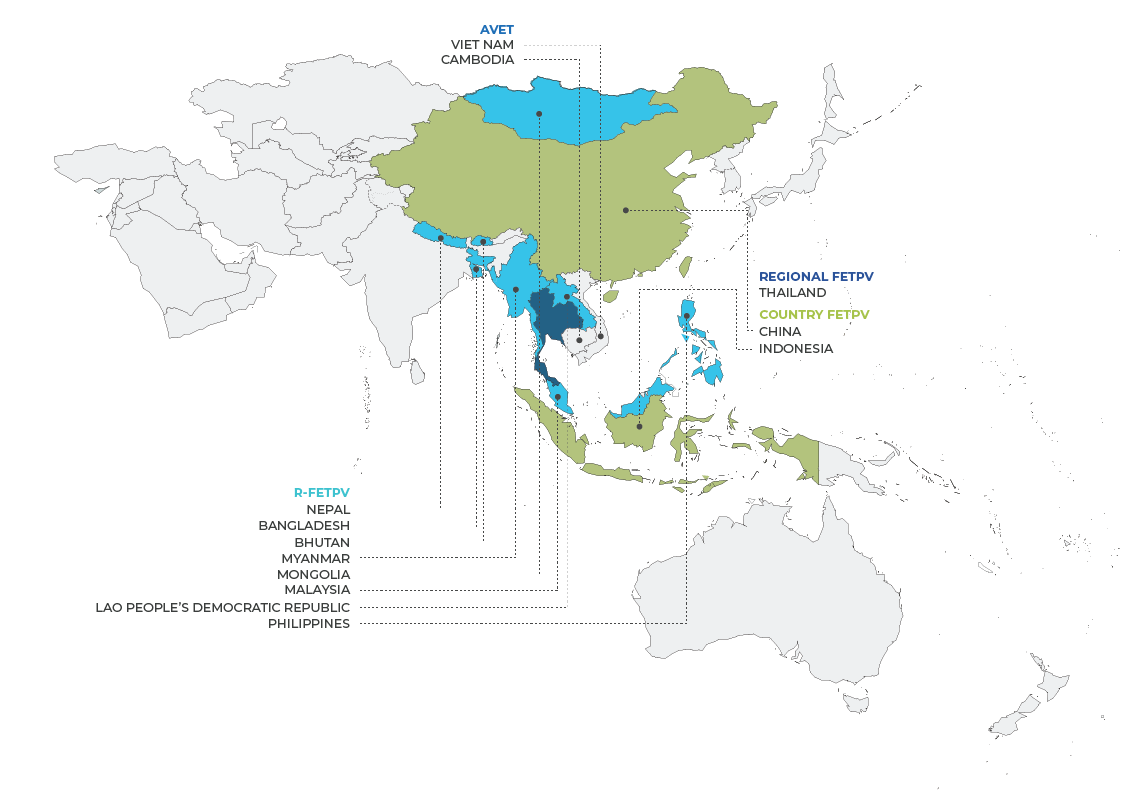The ability to prevent, detect and respond to animal health threats depends on the capacity of national animal health systems across the region. For this reason, competent veterinarians are needed to carry out effective disease control programs at the field level. A strong national veterinary capacity enhances the effectiveness of surveillance systems, improves disease reporting, and strengthens response to outbreaks.
Veterinary field epidemiologists are at the frontline of animal health defence against emerging infectious diseases. They are responsible for understanding disease risk and how to prevent the spread of disease by conducting effective and timely surveillance and rapid outbreak response. Since 2009, FAO ECTAD has been working with countries in the region to build their veterinary epidemiology capacity using a variety of approaches:
- Veterinary field epidemiology training and network development
FAO provides technical, logistical, and financial support to countries in developing and implementing field epidemiology training programs for veterinarians (FETPV) and applied veterinary epidemiology training (AVET). FAO supports countries in equipping
their animal health authorities with knowledge and skills to carry out field investigations as well as apply an evidence-based holistic approach to outbreak management and disease control.
Two FETPV training centres have been established
in China and Indonesia. Meanwhile, the regional field epidemiology training program for veterinarians (R-FETPV) is hosted by the Department of Livestock Development Thailand, and trains new cohorts annually from across Asia and the Pacific.

R-FETPV is a progressive modular program composed of three interrelated modules:
- Basic: Introductory and animal health data analysis (5 months)
- Intermediate: Animal disease investigation (12 months)
- Advanced: Joint R-FETPV and Master's program on field epidemiology (12–24 months)
- Institutional veterinary epidemiology workforce capacity building
We recognize that there are many livestock diseases that can pose significant threats to countries production systems and public health. Therefore, a systematic capacity-building approach is needed to ensure that countries’ veterinary epidemiology workforces are robust enough to detect and respond to diseases at an institutional level. FAO supports countries in developing their veterinary epidemiology workforces through the application of its Epidemiology Mapping Tool (EMT). The EMT is FAO's specific tool for comprehensively assessing government veterinary epidemiology capacity at national, subnational, and local levels, and making recommendations on improvement. This systematic approach provides national veterinary services with country-adapted capacity-building plans that fit their needs.
- Regional strategic frameworks on veterinary epidemiology capacity development and networking
Diseases do not have borders, thus bilateral and regional approaches are vital for collaborating on disease prevention and control initiatives, activities, policies and in the sharing of information and expertise. FAO actively supports and contributes
to the development and implementation of such initiatives. At the regional level, this includes through the ASEAN Veterinary Epidemiology Group (AVEG) and the SAARC EpiNet Forum. An example of a regional strategic framework is the ASEAN Regional
Strategic Framework for Veterinary Epidemiology Capacity Development and Networking.
